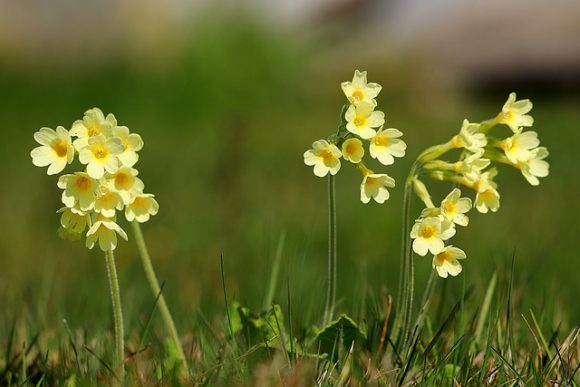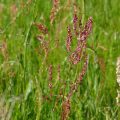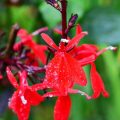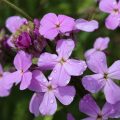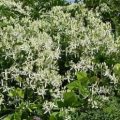- The Miraculous Shiny Bush Plant - January 18, 2021
- Colorful, Edible and Medicinal Celosia - January 10, 2021
- Radish, a Nutritional Power House - December 19, 2020
European cowslip, common cowslip, cowslip, and botanically known as primula veris, is a flowering perennial native to the Northern Hemisphere. It thrives in hedgerows, meadows, and slopes.
[Note: The Right Flowers is not a medical site. Knowledge of and information about the therapeutic benefits and applications of flowers, while known through the ages, does not constitute medical advice. If you are having health issues, you should consult with a physician.]
Cowslips are in the primula or primrose genus and are hailed as harbingers of the spring. However, unlike the English primrose, the common cowslip blooms slightly later in spring.
The name cowslip is borrowed from an old English word cuslyppe, meaning cow dung. This is attributed to the tendency of the plant to grow where cows had dropped their dung or the plant’s rosettes-like formation resembling green cow dung in the meadows.
Between April and May, cowslips produce anise-scented flowers. The blossoms have pale green, baggy and hairy calyces with yellow petals peeping out at the top.
Curiously, cowslips have two different types of flowers: thrum and pin blossoms. Thrum flowers have a stigma inside the corolla with the anthers at the top close to the opening of the flower. Pin flowers have short stamens and long styles. Each plant has either thrum or pin flowers, but never feature both type pf blossoms.
Cowslips have a long, colorful history as herbal plant and edible plant. Unfortunately, the plant is becoming rare due to loss of habitat, harmful farming practices, and over-harvesting of the herb in the wild.
The European cowslip’s aerial parts contain saponins and salicylates. Saponins have an expectorant effect while salicylates have febrifuge and anti-inflammatory effects. The flower and leaves are best when harvested in spring and can be used fresh or dried for later use. These parts also have anodyne, diuretic, and diaphoretic properties.
Cowslip’s yellow petals have sedative and antispasmodic effects. They are ideal for treating insomnia and irritability in children. They are also said to be good for treating allergic reactions. In some instances, the flowers are macerated to produce essential oil. The oil is used to treat bruises.
Apart from their use as herbal remedies, the flowers and young leaves of the cowslip plant are used for food purposes. The Blossoms are great when eaten raw or used as garnishing as they add to the ornamental value of salads. The flowers and leaves are also cooked and eaten on their own or tossed into soups.
Common cowslip is used to make wine. The yellow petals of the plant are mixed with water, sugar, yeast, and fresh lemon peels and juice. The mixture is boiled for about 45 minutes and left to sit and ferment for about a week before the debris is strained out and the resulting beverage drank or stored in a wine cellar.
Though cowslip is an underutilized plant, it has never lost its herbal and culinary purposes.
